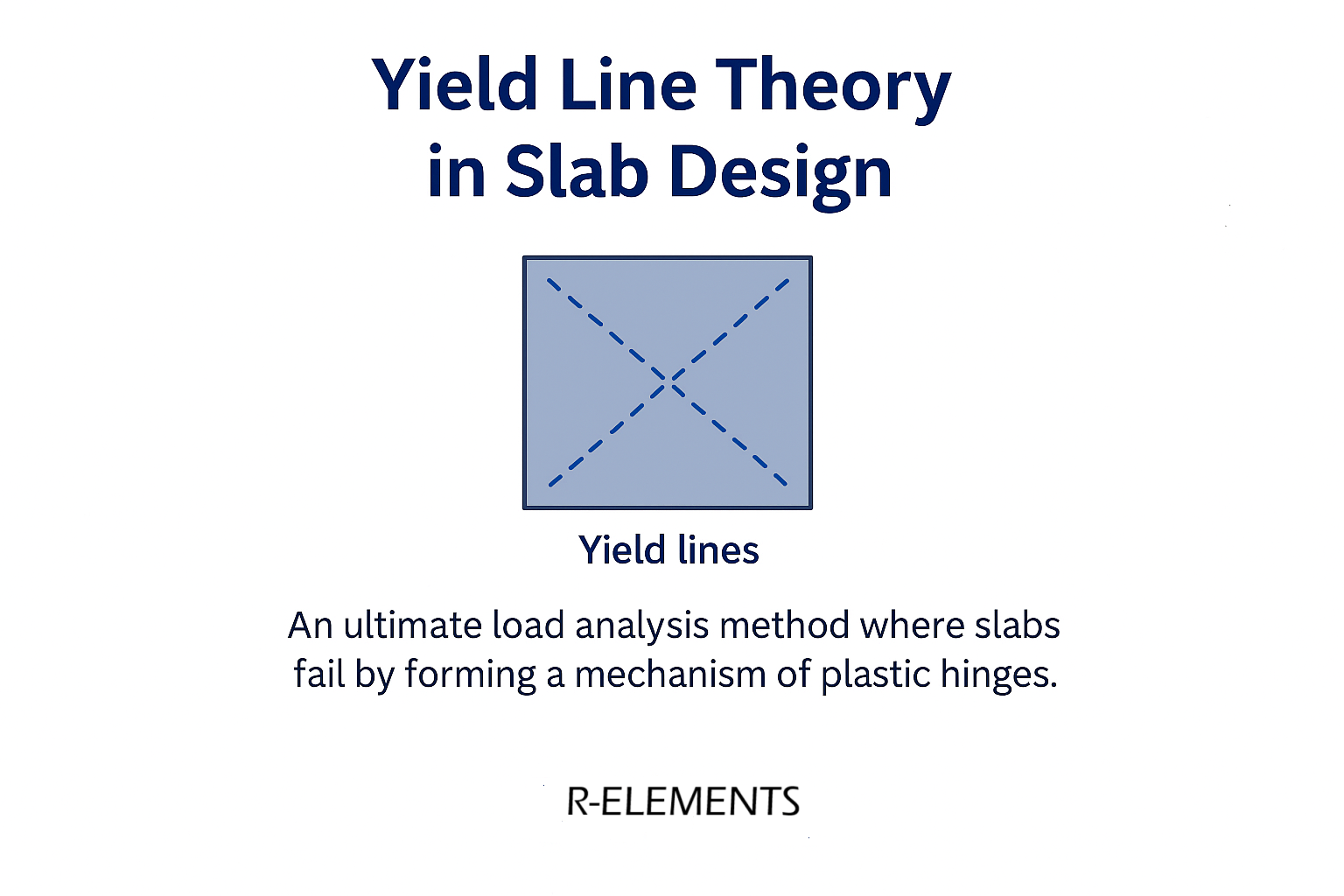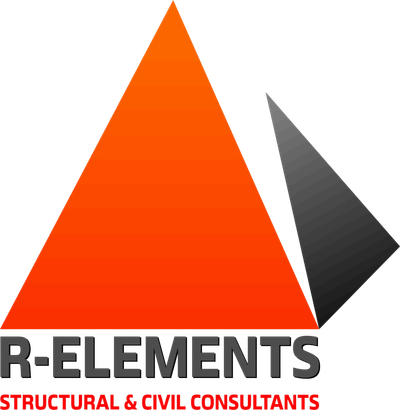Yield Line Theory in Slab Design as per IS Codes

What is a Yield Line? A yield line is a line of plastic hinge formation in a slab where reinforcement has yielded under high bending moments. At collapse:
- The slab cracks along these lines.
- Segments of the slab rotate as rigid bodies about these lines.
- A mechanism forms, leading to failure.
Yield lines represent maximum moment zones and indicate the ultimate load-carrying capacity of the slab. Basic Principle Yield line analysis is based on the Upper Bound Theorem of plasticity:
- The collapse load predicted is always equal to or higher than the true collapse load.
- The method assumes that the slab fails by forming a mechanism of rigid segments separated by yield lines.
Two main approaches are used:
- Virtual Work Method (Energy Method)
- Equilibrium Method
Assumptions in Yield Line Theory As per IS code principles and Johansen’s theory:
- Reinforcement Yielding: Steel yields along yield lines at constant ultimate moment.
- Plastic Deformation: Slab deforms plastically at collapse; segments remain plane.
- Neglect Elastic Deformation: Only plastic rotations are considered.
- Uniform Moment Distribution: Along yield lines, bending and twisting moments are constant.
- Straight Yield Lines: Yield lines are straight as they represent intersections of planes.
IS Code Context While IS 456:2000 primarily recommends elastic methods for slab design, Yield Line Theory is recognized as an alternative method for ultimate load analysis under special conditions, such as:
- Irregular slab geometry
- Slabs with openings
- Slabs subjected to concentrated loads
Designers must ensure:
- Ductility: Slabs should be under-reinforced to allow plastic rotation.
- Detailing: Comply with IS 456 and IS 13920 for ductile detailing in seismic zones.
- Safety Checks: Shear, bond, and anchorage failures must be prevented.
Advantages of Yield Line Analysis
- Provides realistic ultimate load capacity.
- Useful for complex slab geometries.
- Allows economical reinforcement design.
Limitations
- Requires assumed yield line patterns (experience-based).
- May overestimate collapse load if the assumed mechanism is incorrect.
- Not suitable for slabs prone to shear failure.
Practical Application For a simply supported square slab under UDL:
- Positive yield lines form at mid-span.
- Negative yield lines form near supports (for continuous slabs).
- Collapse load is computed using virtual work equation:
External Work=Internal Work along Yield Lines\text{External Work} = \text{Internal Work along Yield Lines}External Work=Internal Work along Yield Lines Conclusion Yield Line Theory is a powerful tool for ultimate load design of slabs, especially where conventional methods fall short. However, it requires engineering judgment, proper assumptions, and compliance with IS codes for safe and economical design.
